Masada is an ancient mountain fortress built by Herod the Great in the time before Christ. It’s located up on a high, isolated plateau in the Judean desert. Kind of like Israel’s version of Mancha Picchu (in Peru).
For a quick history: During the Jewish revolt against the Romans (in AD 70’s), Masada was the last outpost to fall after being besieged. The twist to the story is this: as the fortress was about to be breached, the inhabitants (over nine hundred) committed mass suicide rather than lose their freedom to become slaves of Rome.
American patriot Patrick Henry famously said, “Give me liberty or give me death,” but I guess the slogan for these Jews was more, “Give me liberty or we’ll kill ourselves.” I find the story rather sad.
Anyhow, in the end… the Jews won regardless, because they outlasted the Romans! Now Jews hold Masada once again. And they vow it will never fall again.
I hiked up to the fortress this past weekend. Here is proof the Jews hold it:
The path I took up was called the Snake Path, it’s on the East side (the difficulty of the climb was about equal to hiking up Elk Mountain in Oklahoma for those who have done that).
However, the East side was too hard for the Romans to attack from, and they came up the Western side instead, building a sloping siege ramp (apparently with slave labor).
Here you can see the ramp. You can even walk it if you want, but I went down the other side.
Interestingly enough, their ramp didn’t reach to the VERY top, but instead, at the top they built a siege tower to reach up the wall. Inside the top of the siege tower was a battering ram they used to break down the wall. You can still see the gap in the wall where it was breached. The rebels inside had reinforced the wall with wood and earth, but the Romans burnt that out with flaming torches. Amazing to stand right there and imagine what it must have been like. I had a similar feeling standing on the Little Big Top at Gettysburg.
At the bottom of the plateau, the Romans had built eight or so camps encircling the fortress (holding guard so no one could sneak down and get out). Remains from these encampments are still visible and QUITE visible from the top. It was eerie walking along the wall of Masada and imagining myself as one of the besieged, looking down below to companies of Roman soldiers guarding all chances of escape and slowly, methodically attacking my position. Sort of like in Lord of the Rings when the Riders of Rohan retreat to Minas Tirith, only in this story the defenders lose.
I took the following video (from on top) of the encampments below. I’m like 1300 feet above the desert floor.
Since Masada is in such a remote and arid location (and indeed, the location lost to human knowledge until the 1800s), much of it has been well preserved.
When I see ancient ruins it’s easy to think the place looked kind of like a dumpy rock place back then too, but that’s not true. At Masada there were a few places where original plaster (from before Christ) covering the rocks remained. This gave me a small glimpse of how amazing the place must have looked back in the day.
For example, notice in this next picture how some of the rocks are crumbling, some are still stacked straight, and at the bottom even the original plaster remains covering the wall and columns:
This previous picture was taken at the North end of the fortress and was part of Herod’s palace. The view from his palace of the desert and Dead sea is incredible. In the next picture you can see part of that view and to the right, the rounded dais were the previous photo was snapped:
Another cool thing at Masada are the ancient cisterns. They were hewn from the rock (and indeed, doubled in purpose as on-site rock quarries). I was able to go down in one. There was graffiti on the walls, but I didn’t see any from ancient times, just recent (like 2004).
So that’s Masada. It was amazing.
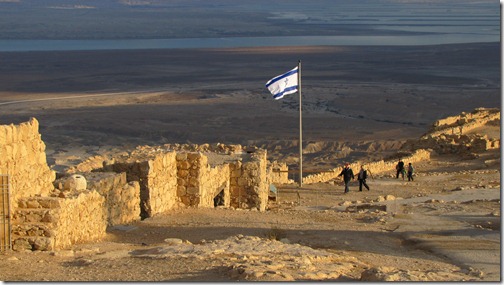
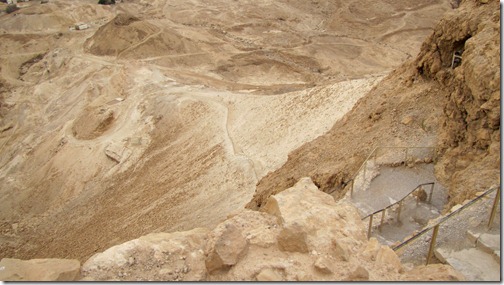
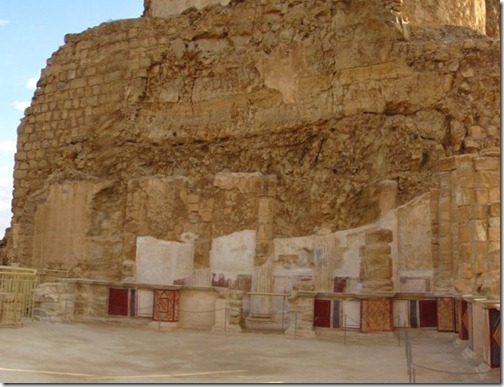
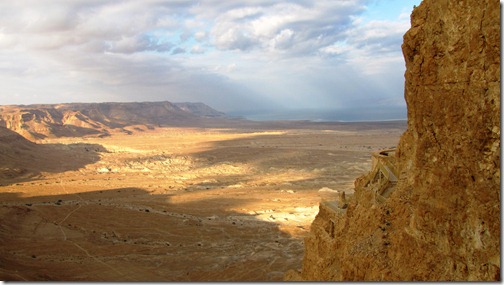
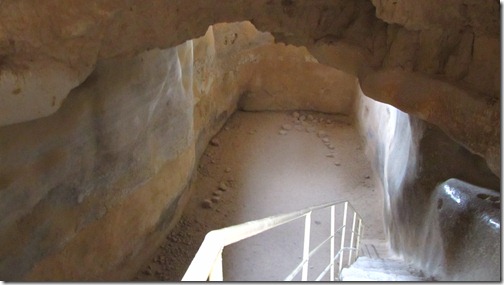
Wow!! That’s awesome!!